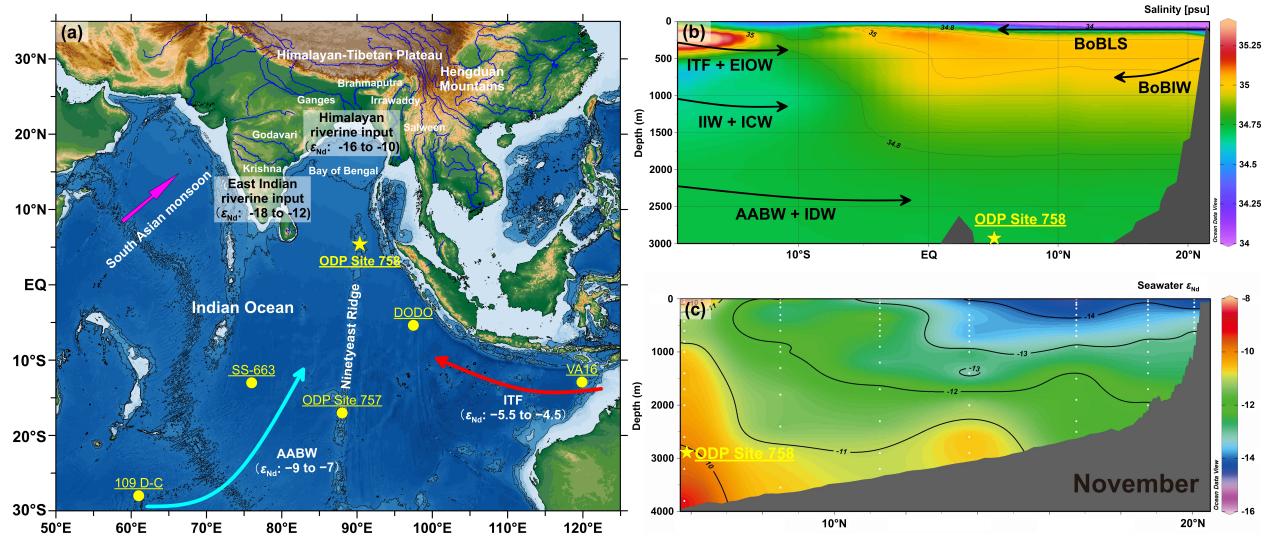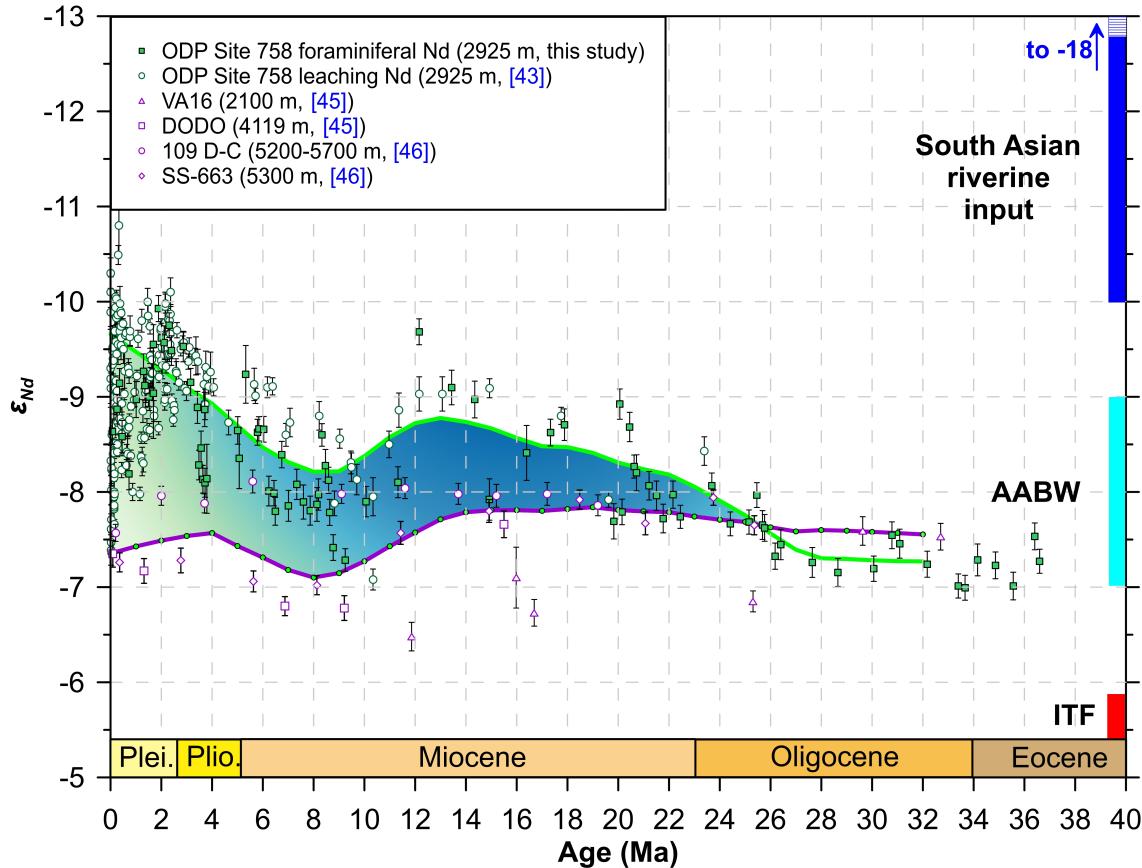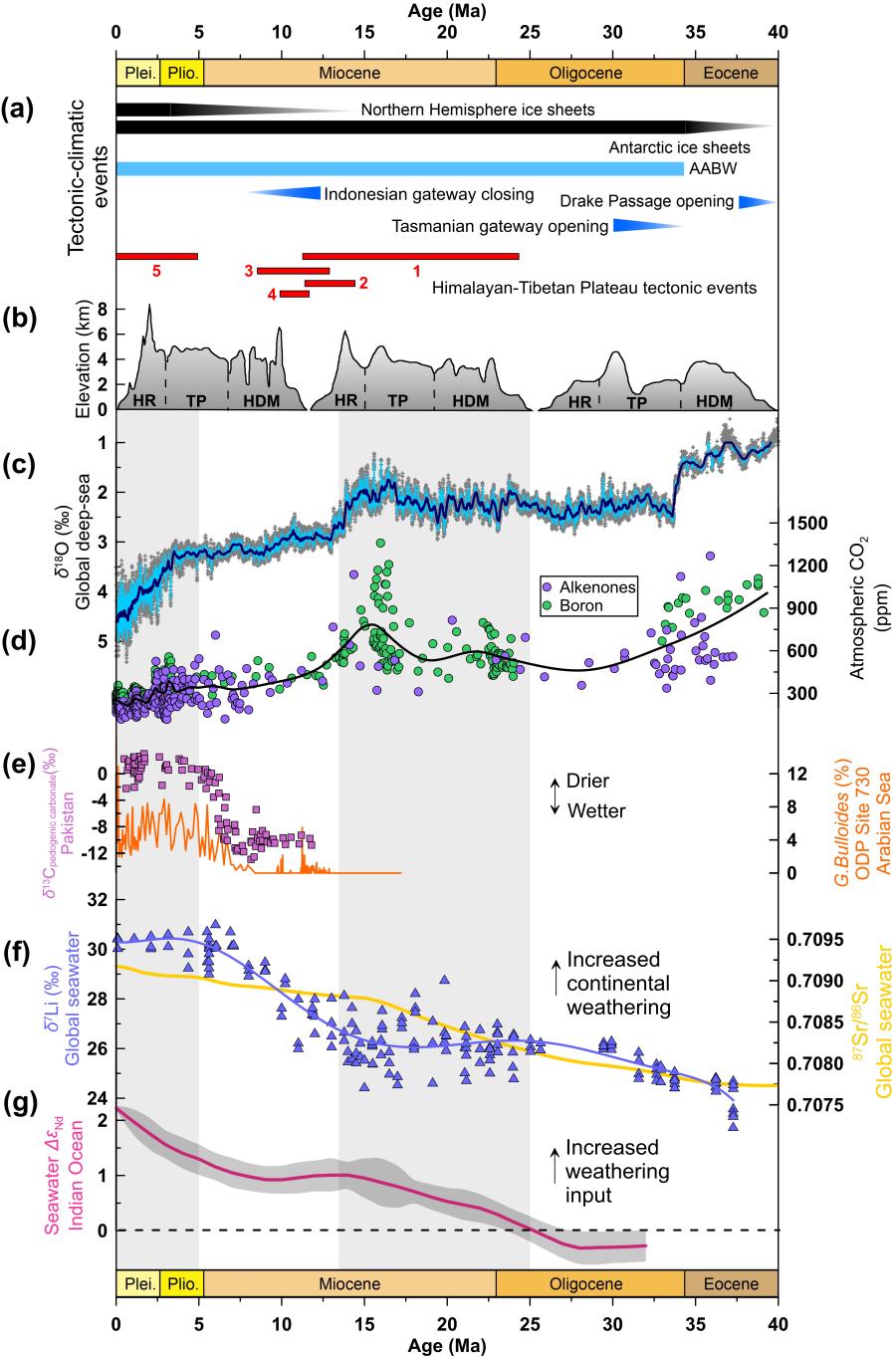The Earth's climate experienced drastic changes during the Cenozoic, characterized by global cooling and development of polar ice sheets. A gradual decrease in atmospheric CO2 concentration was considered to be the key factor in this long-term cooling. However, the driving mechanism of these variations is still debated.
Recently, the research team led by Prof. WAN Shiming from the Institute of Oceanology of the Chinese Academy of Sciences (IOCAS), Prof. Christophe COLIN from Géosciences Paris-Saclay (GEOPS) of Université Paris-Saclay and co-researchers reported a continuous weathering record spanning the past 37 million years, which was based on the planktonic foraminiferal neodymium isotopes of marine sediment core in the Bay of Bengal (BoB).
The study was published in Science Bulletin on Jan. 13.
The Ganges-Brahmaputra River system is the largest sediment supplier in the world and drains through the Himalayan-Tibetan Plateau (HTP), which directly delivered a huge amount of terrigenous materials to the BoB during the Cenozoic. Here researchers reported the radiogenic Nd isotope record of planktonic foraminifera of Ocean Drilling Program (ODP) Site 758 sediments in the northern Indian Ocean since the late Eocene, and compared it with the Nd isotope record in the central Indian Ocean to eliminate the influence of the Indian Ocean water masses. The difference between these two parts (ΔεNd) was used to indicate the contribution of continental weathering input from South Asian continent.
The εNd values of fossil planktonic foraminifera reflect the bottom water εNd values due to the presence of authigenic Fe-Mn coating that precipitated onto the carbonate shells. Numerous studies have shown that the processes imprinting dissolved εNd signatures on seawater at ocean margins, derived from terrigenous materials, are closely linked to continental denudation. Seawater εNd distribution in the northern Indian Ocean displays an obvious north-south gradient in the BoB, which is induced by the different Nd isotopic characteristics of the terrigenous input (εNd: -16 to -10) from the Himalayan river systems (e.g. Ganges-Brahmaputra River system) and the water masses mixing (εNd: -9 to -7) from the Southern Ocean. This suggests a two end-member mixing by the South Asian continental weathering input and the Indian Ocean deep water mass.
The εNd values of the foraminifera at ODP Site 758 showed a long-term negative trend, and a distinct variation relative to detrital Nd isotopes and the clay mineral ratio of smectite/(illite + chlorite) at the same core, but similar rapid pulses occurred with increasing terrigenous flux at ~21, 8, 6 Ma and since 3 Ma. This observation indicated that the foraminiferal Nd isotope record at Site 758 might not be significantly influenced by changes in sediment provenance and weathering degree onshore, but mainly reflects the evolution of silicate weathering input from South Asia.
Furthermore, researchers proposed a new proxy, ΔεNd, which indicates the contribution of continental weathering from South Asia to the Indian Ocean. This result suggests a long-term intensification of South Asian weathering input since the late Cenozoic. Specifically, the growth of ΔεNd values during 25-13 Ma and 5-0 Ma corresponds to the rapid uplift of the Himalayan orogeny during the late Miocene and Pliocene, fast exhumation at Himalayan syntaxes and outward growth in eastern Tibet during the early Pliocene, and global cooling since the early Pliocene. This indicates a coupled tectonic-climate-weathering evolution in South Asia. Moreover, the atmospheric CO2 level shows a rapid decline during the enhanced South Asian weathering input periods. This is also supported by the consistent variations in ΔεNd with the long-term evolution of Li and Sr isotopes in seawater since the late Eocene.
"Our study provides the first evidence of long-term enhanced weathering input obtained from seawater Nd isotope in South Asia since the late Eocene, suggesting that the intensification of silicate weathering caused by the uplift of the Himalayas plays an important role in the global cooling at the late Cenozoic," said SONG Zehua, first author of the study.
"Our future studies need to combine simulations to accurately quantify the carbon sink effect of South Asian weathering on the late Cenozoic cooling," added Prof. WAN.
This work was supported by the National Natural Science Foundation of China, etc.

Fig. 1 Map of South Asia region, locations of ODP Site 758 (yellow star) and relevant study sites in the Indian Ocean.

Fig. 2 Comparison of seawater Nd isotope records in the northern Indian Ocean (ODP Site 758) and central Indian Ocean (ferromanganese crusts) since the late Eocene.

Fig. 3 Comparison of Nd isotopic compositions and clay mineral ratio of detrital sediment, seawater at ODP Site 758, terrigenous mass accumulation rate (MAR) at ODP Site 758 and the sedimentation rate in the central Bay of Bengal.

Fig. 4 Evolution of South Asian weathering input and its link to global climate and tectonic events during the Cenozoic.
Zehua Song, Shiming Wan*, Christophe Colin*, Christian France-Lanord, Zhaojie Yu, Arnaud Dapoigny, Hualong Jin, Mengjun Li, Jin Zhang, Debo Zhao, Xuefa Shi, Anchun Li. (2023). Enhanced weathering input from South Asia to the Indian Ocean since the late Eocene. Science Bulletin.
(Text by SONG Zehua)
Media Contact:
ZHANG Yiyi
Institute of Oceanology
E-mail: zhangyiyi@qdio.ac.cn
(Editor: ZHANG Yiyi)

